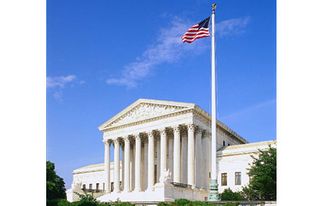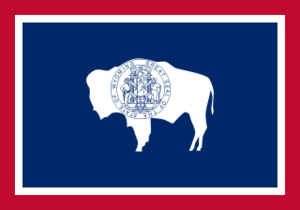By Emily Hobbs-Wright
In a huge win for employers, the U.S. Supreme Court today decided that for purposes of determining employer liability for Title VII harassment cases, a “supervisor” is limited to those who are empowered by the employer to take tangible employment actions against the victim. Vance v. Ball State Univ., No. 11-556 (U.S. June 24, 2013). This means that employees who oversee the daily activities of other employees, but do not have the power to discipline, fire, promote, transfer or take other actions against an employee, are not considered “supervisors” in workplace harassment cases under Title VII.
In drawing a sharp line between co-workers and supervisors, the Supreme Court adopted a clear standard that parties and reviewing courts can apply early in a case in order to determine which side has the burden of proof in Title VII harassment litigation.
Supervisor vs. Co-Worker as Harasser – Why It Matters
Determining employer liability for harassment under Title VII of the Civil Rights Act of 1964 depends on whether the alleged harasser is a “supervisor” or a “co-worker” of the individual being harassed. If the harasser is a co-worker, the employer will be liable for the harassing behavior only if the complainant can show that the employer was negligent, meaning that the employer knew or should have known of the conduct and failed to take immediate and appropriate corrective action. See 29 CFR § 1604.11(d).
If the harasser is a supervisor, however, the test for employer liability changes dramatically. If the harassing supervisor caused a tangible employment action such as firing, demoting or reducing the complainant’s pay, the employer will be automatically liable for the harassment. If there was no tangible employment action, the employer may still be liable, unless it can meet a two-pronged affirmative defense known as the Faragher/Ellerth defense.
In order to establish the Faragher/Ellerth defense, outlined by the Supreme Court in the companion cases of Faragher v. City of Boca Raton, 524 U.S. 775 (1998) and Burlington Industries, Inc. v. Ellerth, 24 U.S. 742 (1998), an employer must show: (1) that the employer exercised reasonable care to prevent and promptly correct the harassing behavior; and (2) the plaintiff-employee unreasonably failed to take advantage of preventative or corrective measures established by the employer or to avoid harm otherwise.
The key difference between cases alleging harassment by a co-worker and a supervisor is the burden of proof. With co-worker harassment, the plaintiff-employee bears the burden of demonstrating employer negligence. When trying to avoid liability for supervisor harassment, however, the employer bears the burden of establishing the Faragher/Ellerth affirmative defense. The higher hurdle that must be met by employers when litigating supervisor harassment raises the opportunity for the plaintiff-employee to recover damages for harassment in the workplace. Consequently, an important issue in a harassment case is whether the alleged harasser is a supervisor or a co-worker.
Supreme Court Resolves Split in the Circuits on Definition of “Supervisor”
Lower courts have disagreed on the test for deciding whether an alleged harasser is a “supervisor” or merely a co-worker. Some federal appellate courts, including the First, Seventh and Eighth Circuits, have ruled that an employee is not a supervisor under Title VII unless he or she has the power to hire, fire, demote, promote, transfer, or discipline the victim. Other circuits, including the Second and Fourth Circuits, have followed the more expanded approach urged by the Equal Employment Opportunity Commission (EEOC), which applies “supervisor” status to those who have the ability to exercise significant direction over another employee’s daily work activities.
In a 5-4 decision, the Supreme Court resolved this split in authority by holding that an employer may be vicariously liable for an employee’s unlawful harassment only when the employer has empowered that employee to take tangible employment actions against the victim, that is, to effect a significant change in employment status, such as hiring, firing, failing to promote, reassignment with significantly different responsibilities, or a decision causing a significant change in benefits. Calling the EEOC’s definition of supervisor “nebulous,” the Court stated that it was not sufficient to deem an employee a “supervisor” based on his or her ability to direct another employee’s tasks. The Court noted that the EEOC Guidance that looks at the number (and perhaps the importance) of the tasks in question would be a “standard of remarkable ambiguity.” Relying on the Faragher and Ellerth decisions, the Court stated that a supervisor is instead empowered by the company as a distinct class of agent that may make economic decisions affecting other employees under his or her control.
Bright Line Between Co-Workers and Supervisors Will Aid Employers Facing Harassment Claims
The bright line test that the Court adopted for determining who is deemed a “supervisor” in Title VII cases eliminates murkiness and provides a clear test that reviewing courts can easily apply. The Court noted that it typically will be known before litigation is commenced whether an alleged harasser was a supervisor, and if not, it will become clear to both sides after discovery. The Court goes on to say “once this is known, the parties will be in a position to assess the strength of a case and to explore the possibility of resolving the dispute. Where this does not occur, supervisor status will generally be capable of resolution at summary judgment.” The Court clearly wanted employers to be able to get the supervisor issue resolved early in a lawsuit so that both sides will know who bears the burden of proof and can pursue early resolution of the case based on the strength of the evidence.
Employees Still Protected, but Must Prove Company Negligence
The Court’s majority, which includes Justices Alito, Roberts, Scalia, Kennedy and Thomas, states that employees who face harassment by co-workers who possess the authority to inflict psychological injury by assigning unpleasant tasks or by altering the work environment in objectionable ways will still be protected under Title VII. The Court states that such victims will be able to prevail “simply by showing that the employer was negligent in permitting this harassment to occur, and the jury should be instructed that the nature and degree of authority wielded by the harasser is an important factor to be considered in determining whether the employer was negligent.” According to the majority, the fact that harassing co-workers may possess varying degrees of authority over daily tasks will not be a problem under the negligence standard “which is thought to provide adequate protection for tort plaintiffs in many other situations.”
Dissent Would Follow EEOC’s Guidance and Extend “Supervisor” Status Based on Authority to Direct an Employee’s Daily Activities
Justice Ginsburg, joined by Justices Breyer, Sotomayor and Kagan, wrote a lengthy dissent opining that the majority’s rule diminishes the force of Faragher andEllerth, ignores the reality of the current workplace and strays from the objective of Title VII in preventing discrimination in the workplace. The dissent favors the EEOC’s Guidance, believing that employees who direct subordinates’ daily work are supervisors. Justice Ginsburg wrote that although one can walk away from a fellow employee’s harassment, “[a] supervisor’s slings and arrows, however, are not so easily avoided.” The dissent recites numerous cases in which a person vested with authority to control the conditions of a subordinate’s daily work life used his position to aid his harassment, and then points out that in none of the cases would the majority’s “severely confined definition of supervisor yield vicarious liability for the employer.” The dissent concludes that the majority decision embraces a position that relieves scores of employers of responsibility for the behavior of the supervisors they employ.
Conclusion – Victim Must Prove Employer Negligence When Harassed by a Non-Supervisor
The Vance opinion means that employees alleging harassment by another employee who does not have the power to hire, fire, promote, transfer or discipline them, bear the burden of proving the employer’s negligence in order for the employer to be liable for the harassment. This means the alleged victim must prove that the employer knew or should have known of the conduct and failed to take immediate and appropriate corrective action.
Disclaimer: This article is designed to provide general information on pertinent legal topics. The statements made are provided for educational purposes only. They do not constitute legal advice and are not intended to create an attorney-client relationship between you and Holland & Hart LLP. If you have specific questions as to the application of the law to your activities, you should seek the advice of your legal counsel.









![MH900438796[1] MH900438796[1]](https://www.employerslawyersblog.com/wp-content/uploads/2013/06/6a013486823d73970c0192aaf7d2f9970d-250wi.jpg)
